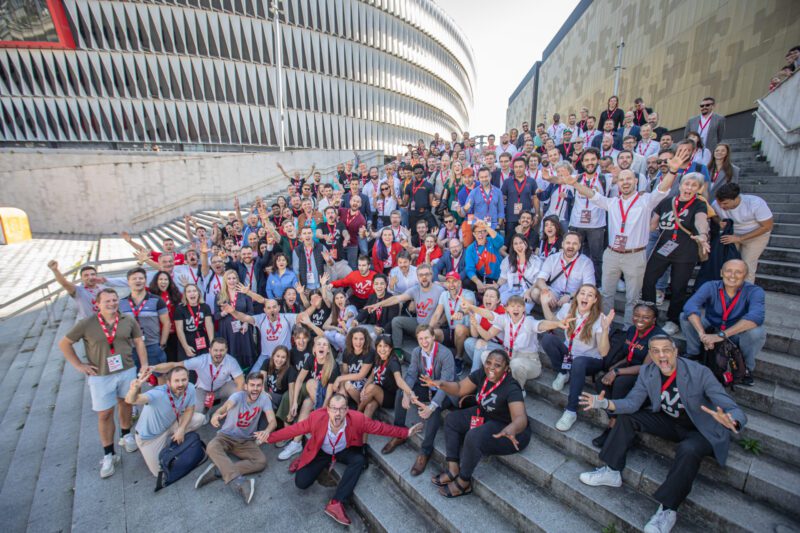The last 8 weeks have been a huge shift, shift in the way we live, eat, drink, and work. More importantly, one of the basic human urges to learn has been completely changed. Isolation and quarantine have re-ignited the primal urge of humans to learn and to better themselves, more so as we are faced with uncertainty.
For us at Startup Wise Guys, it also meant moving both of our on-site programs fully online, including the one I managed to run in Tallinn still in the office for 2 weeks.
While transition to online tools have been somewhat easy for us, as we are used to working remotely, keeping the engagement in online environment has been a real challenge both for us ourselves, but also for many of our mentors, who are used to running on-site workshops.
Farid Singh
I hope that this list of advice will be useful to many starting from teachers and lecturers and finishing with our mentors, who now are embracing the world of online workshops.
10 steps to creating engaging online delivery and content
Delivery
It is extremely important that you are clear to the participants on how the delivery of the workshop/content will happen. Are we talking video, audio, both? Is it pure one way or more conversational? This should be in the webinar invite before the event even starts. In addition, you should reiterate this at the very start of the online engagement. So, if you want videos on, tell people this in the invite.
Why are they here
It helps to break the ice, by asking the audience why they are here? It might also help you direct the webinar in a particular direction. While I use it mainly when I have a workshop to deliver, I have used it on bigger webinars as it gets people engaged from minute 1.
Set the ground rules
How are you going to engage during the workshop? Are you going to cold call participants? I find when teaching, cold calling helps, though I always let the audience know right at the start of the webinar. If I am giving a more informational webinar, I tell people to ask questions during or at the end depending on the size of the audience.
Content
Different times call for different measures. I find the content makes a huge difference. Visual content is much better, and anchors to deliver the point. I tend to introduce funny Gifs in classes and coaching sessions, to lighten the mood. It gets people involved, and lets you bond better with the audience. Of course you need to make it appropriate for the audience. For example, gifs from the TV Show Office are quite good in corporate webinars, while with students you can use anything that is not offensive.
Ask questions
I tend to put one question slide every 3 slides to get audience to participate. “What do you think is the difference between Hypothesis and assumptions?” or “When should you experiment?” or very general questions, that everyone can answer. There are usually good pieces of the answer and gets everyone going. I also ask them to elaborate on answers sometimes, and this gets more people interested.
Breaks
Do double the number of breaks you might do in person. You can also increase the breaks by giving tasks to do in the breaks and always mention the time to be back rather than see you in ten minutes. Better to be back at 10:25 Paris time.
Platform and tools
The platform is the key to giving good webinars. There are all sorts, and I want to concentrate on the types. Use a platform like Zoom, Skype, Meet, Teams to give big webinars. Then if you need people to break up and do something, like I do in my design thinking workshops, you can use small room links like Whereby or create multiple links on Google and say use them as breakout room 1, room 2 etc. For professionals, who will do this very regularly, you can look at the conference option from Remo.co. They allow some cool features to allow break out rooms etc. You can reuse this to do networking happy hour at the end of the workshop too.
Annotation
It helps to have either a virtual pointer or an annotation tool in the platform. Zoom allows to use a virtual whiteboard, for example.The more you annotate, the more people get engaged.
Slide presentation
If you are using slides, try and use a on click appearance feature. So, you create slides, where you have to click to let more and more of the slide content show itself. This helps participants, not read the whole slide, and fade out of concentration.
Arm yourself with a pen and paper
Unlike in person workshops, the task of creating engagement is very difficult online. Use the paper and pen to write down questions you would like to ask, names of people who have answered, and use it throughout the workshop. You can also ask people to put their company name in the online name that they have on the webinar, so others know a little more about them.
About the author:

Farid is Managing Director of CyberNorth programs, gives regular workshops at Startup Wise Guys (the last 2 done online were rated 9.1 and 8.5 out of 10), and also is the Head of Design Coaches at one of the top business school in the world, INSEADs, online Design Thinking and Creativity for Business online program. We hope his advice will help all the mentors and lecturers out there to ensure engaging and productive online workshops, webinars and classes.



